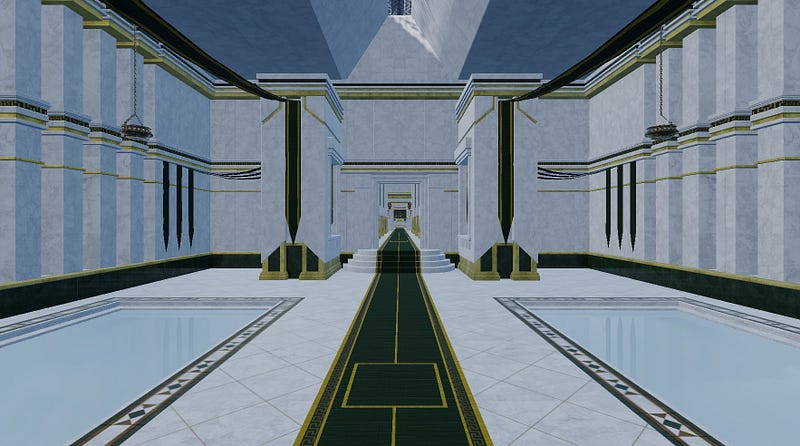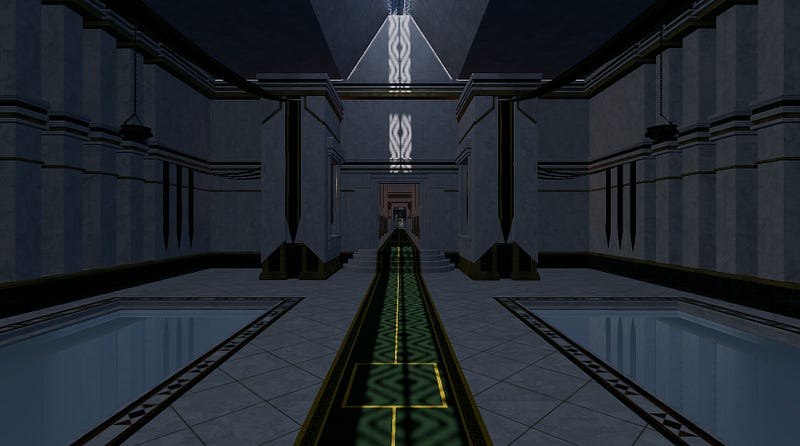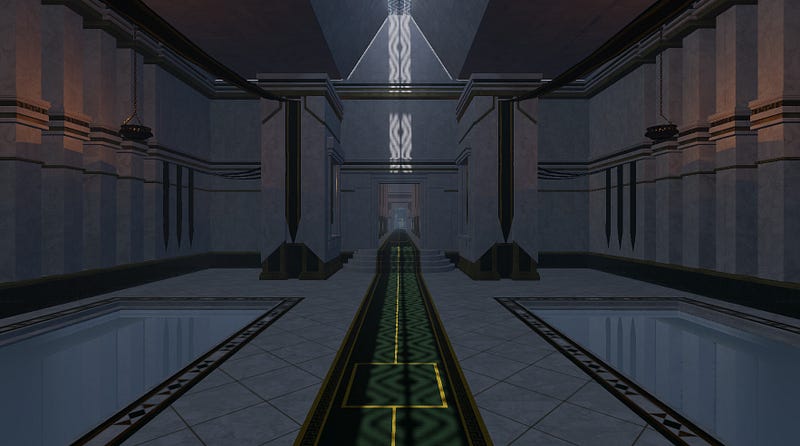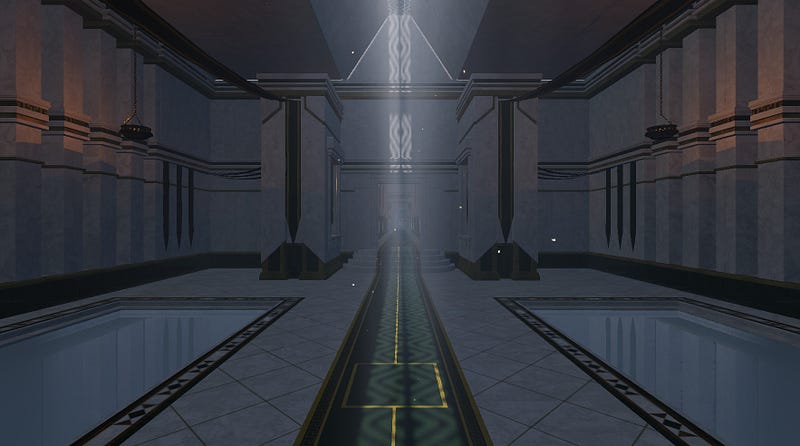For us, implementing an interior light setup was not as simple as building from the ground up as you usually would for an indoor scene. This is because we are using completely real-time systems, including our lighting.
The prologue of Elegos will take place on Phacos, an island in the middle of the sea, so it made sense for us to build our base lighting using real-world physical values to create realistic-looking exterior light and shadows. On the other hand, Phacos is home to several interior locations and the lighting of each is essential to selling the mood intended.
Building interior lighting
Here is the starting point, a shot from the entrance to Alexander’s villa. At

At this moment the light is taking all its data from our current exterior settings, including the main directional light used for the sunlight. Because of this, the ambient lighting and shadows appear incorrect for an interior scene since we are pushing our exterior to be bright and flat to match the Mediterranean setting. The villa was designed specifically with this in mind by having the exterior and interior modelled as separate meshes. This allows us to utilise the built-in unity light layers to specify which lights affect which mesh. This allows us to use a different light to create dramatic shadows that only affect the villa’s interior without affecting the rest of our scene. To push this effect, we also added a local volume containing an ‘indirect lighting controller’ with a low multiplier to lower the ambience which is being cast from the HDRI sky.

The scene is getting closer here, but to further ground it, we have used a subtle fog volume that has its colour mode set to ‘Sky Color’. To add some further contrast we have added a few glowing lanterns adding warmth against the cool temperature of the sunlight.

The final effect for our initial setup is a Unity Density Volume, which is utilising a 3d fractal texture to simulate fog motion coming from the light shaft down the centerline. Also, a simple floating dust particle system adds further motion and life to the scene.

This is just one way to build interior lighting using HDRP and was specific to our requirements. We are happy with these results as a starting point and will likely need to tweak and adapt them as we add more props and NPCs to the scene.


